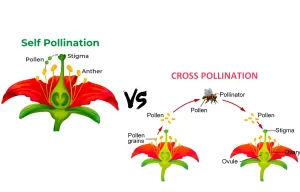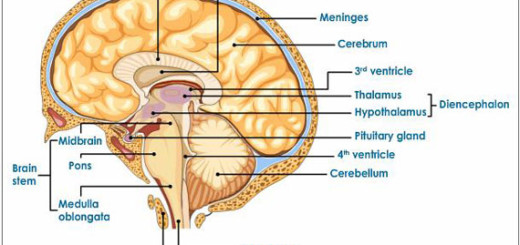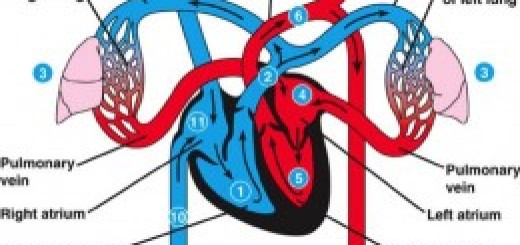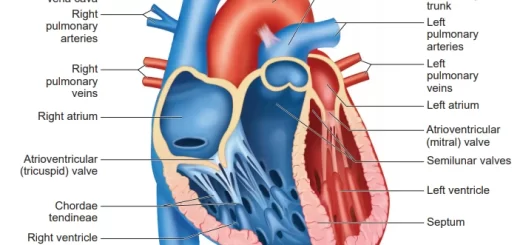Types of pollination in the plants, What is self and cross pollination?
Plant reproduction is the process by which plants generate new individuals, there are two kinds of reproduction in plants which are sexual reproduction and asexual reproduction, The flowers are classified according to sex into three types which are the male flower, the female flower, and the bisexual (hermaphrodite) flowers.
Reproduction in plants
The male flowers contain only male reproductive organs (the androecium) and they are unisexual such as the palms, the maize and the pumpkins, The female flowers contain only female reproductive organs (the gynoecium) and they are unisexual such as the palms, the maize and the pumpkins, The bisexual (hermaphrodite) flowers contain both the male and female reproductive organs such as the tulip, the petunia, and the wallflower.
Sexual reproduction in plants happens via the flowers, it takes place in two successive processes which are pollination and fertilization, it is the formation of offspring by the fusion of gametes while asexual reproduction is the formation of offspring without the fusion of gametes.
Pollination is the process of transfer of pollen grains from the flower anthers to the stigmas, the pollen grains are small cells that formed in the anther inside the pollen chamber, When those grains become mature, the anther splits longitudinally and the pollen grains spread in the air like the dust.
Pollination is essential for the survival of many plants, and it also plays an important role in the food chain. Many of the fruits and vegetables that we eat rely on animal pollinators for reproduction. If there were a decline in pollinator populations, it could have a significant impact on our food supply.
The decline of pollinators is a major threat to food security and biodiversity. Many factors are contributing to the decline of pollinators, including habitat loss, pesticide use, and climate change. We can all help to protect pollinators by planting pollinator-friendly gardens, avoiding pesticides, and supporting organizations that are working to conserve pollinators.
Types of pollination
There are two types of pollination which are self (auto) pollination and mixed (cross) pollination, Self (auto) pollination is the transfer of pollen grains from the anthers of a flower to the stigmas of the same flower or to another flower in the same plant, Mixed (cross) pollination is the transfer of pollen grains from the anthers of a flower to the stigmas of another flower in other plants of the same kind.
Cross-pollination is more beneficial for plants, as it allows for greater genetic diversity. This diversity makes plants more resistant to diseases and pests and helps them to adapt to changing environmental conditions.
If the flowers are on two different individual plants, the flowers have been cross-pollinated, and if the flowers are on the same individual or if the anther and the stigma are in the same flower, the flowers have been self-pollinated.
The flowers that are self-pollinated and can produce viable seeds are self-compatible, and the flowers that are self-pollinated but the pollen grains that do not function properly on the carpels of the same plant are termed self-incompatible.
Methods of mixed (cross) pollination
The pollen grains are transferred from one flower to another in different ways which are the pollination by wind, the pollination by insects, and the artificial pollination.
Pollination by air
The flowers which are pollinated by the air are characterized by their anthers are hanged to be easily opened by the air, and their stigmas are feathery-like and sticky to catch the pollen grains from the air.
The flowers produce huge numbers of pollen grains to compensate what is lost in the air, and their pollen grains are light in weight and dry to be easily carried by air.
Pollination by insects
The flowers pollinated by the insects are characterized by their petals that are colored and scented to attract the insects to feed on their nectar, and their pollen grains are sticky or have coarse surfaces to stick on the insect body.
Artificial pollination
The artificial pollination is carried out by man, man has to pollinate the palm trees to ensure the pollination process as the pollination is difficult to occur by the air or by insects, where the gardener spreads the palm tree’s pollen grains over their female flowers.
Importance of pollination in plants
Pollination is the transfer of pollen grains from the male part of a flowering plant (anther) to the female part (stigma). It is a vital part of plant reproduction, as it leads to fertilization and seed production. Without pollination, plants can’t reproduce sexually and create seeds and they would die out. Seeds are essential for plants to spread and colonize new habitats.
Pollination can also help to increase genetic diversity within plant populations. Cross-pollination allows plants to mix their genes with other plants of the same species. When pollen is transferred between different plants, it can lead to the creation of new offspring with different traits. This genetic diversity is important for helping plants to adapt to changing environmental conditions, such as disease, pests, and climate change.
Many of the fruits, and vegetables we eat rely on animal pollinators, like bees, butterflies, and birds, to transfer pollen. Pollinators help to ensure good crop yields and the variety of foods we enjoy.
Pollination is is essential for healthy ecosystems. Plants are the base of the food chain, and many animals rely on fruits, seeds, and nuts for food. Plants provide food and habitat for animals, and they also help to regulate the climate. Pollination supports healthy populations of pollinators, which are themselves a vital part of the ecosystem.
Asexual and sexual reproduction in plants, Pollination and Stages of fertilization process in plants
Pollination, Fertilization, Seed and Fruit formation in flowering plants
Transportation in plant, Structure and role of the plant stem in the process of transportation
Autotrophic Nutrition in Green Plants, Mechanism of Water and Minerals Absorption
Reproduction in flowering plants, Structure and functions of the flower





Artificial pollination is done by purpose, right?
Artificial pollination is carried out by man, man has to pollinate the palm trees to ensure the pollination process as the pollination is difficult to occur by the air or by insects, where the gardener spread the palm tree’s pollen grains over their female flowers.